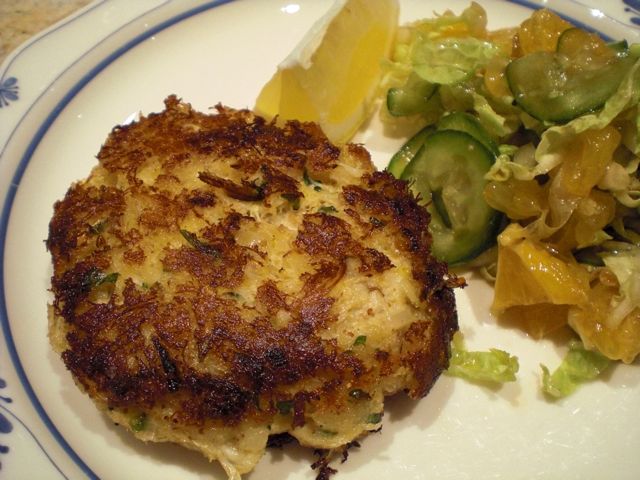Along the
Chesapeake bay,
blue crabs are famous. These are rather small crabs but the meat is very sweet. One of the ways to enjoy this crab is to go to the bay and get one bushel of boiled or steamed blue crabs. Then, sit on the dock, crack the shells and eat. Throw carcasses back into the Bay as you eat and see lots of fish come up to feed on whatever meat we missed. If you or your friend have a boat on the Chesapeake bay, this is the preferred way of enjoying Maryland blue crabs. You can also go to one of crab houses in the area. They will give you a bib, a wooded mallet and a special fork. A mound of freshly boiled crabs is dumped on the news-paper covered table, and everybody has at it with hands and mallet. It is customary, especially in Maryland, that crabs are cooked with "
Old Bay" seasoning.
McCormick used to have a factory in downtown Baltimore where they made this seasoning. For me, this is good but too much work and the Old Bay seasoning is too strong. Beside just eating steamed or boiled crabs, two most famous crab dishes in this area must be crab cake and deep fried soft shell crab (especially as a sandwich). Although it was a weekday night, I made crab cakes. We also love soft shell crab (particularly as tempura) and hope
I can post that dish sometime later.

Crab cakes look somewhat like "crab croquette" (Mark's book p.57), but it is composed of mostly crab meat and only a small amount of binders and fillers are used. It is best to use lump or jumbo lump crab meat. I used 8oz of cooked crab meat (not canned) to yield 4 crab cakes. It comes in a sealed plastic container and is readily available in grocery stores in our areas. I finely chopped one small onion, fresh shiitake mushrooms (3-4 medium), parsley (3-4 sprigs), lemon zest from 1 lemon (as usual I used a micro-grater). Using a small amount of light olive oil (1tbs), sauteed onion first and then the chopped shiitake mushroom for 3-4 minutes, season with salt and black pepper, place it in a metal mixing bowl to cool. (If I have jalapeño pepers, I often add finely chopped, seeded and deveined jalapeno pepper as well.) When, the onion mixture is cool, add chopped parsley, lemon zest, a splash or two of Worcestershire sauce and Tabasco, 1 tbs of mayonnaise, 1 tsp of Dijon mustard, and 3-4 tbs of Japanese "panko" bread crumbs and gently fold the crab meat in. You could add a whole egg or egg yolk as a binder but I prefer not to add eggs. Make whatever size round or oval flat patties (I made four about 3 inch diameter and 1/2 thick patties). They are rather delicate and barely hold together. Melt 1-2 tbs of butter or olive oil (or combination) in a non-stick frying pan, and cook the crab cakes (3-4 minutes per side). Be careful when you turn them over, they are mostly crab meat and it is very easy to crumble.
For the accompaniment, I made a simple cucumber, nappa (Chinese) cabbage (only soft and green part), mandarin orange (peel outer and inner skins. Halve and slice) with a simple olive oil, balsamic vinegar dressing. You could serve crab cakes with a tartar sauce but we like to eat simply with a lemon.
Speaking of crabs, we really like Japanese specialized crab "kani" 蟹 restaurants (especially in Sapporo). They serve crabs in so many different ways but you do not have to work to get the crab meat. If you visit Japan especially Sapporo, try these specialized crab restaurants and their course menu.
